China crash could hit house prices
CHINA’S stock market crash has already bled into the iron ore price, and it could have flow-on effects into Australia’s credit-fuelled housing market.
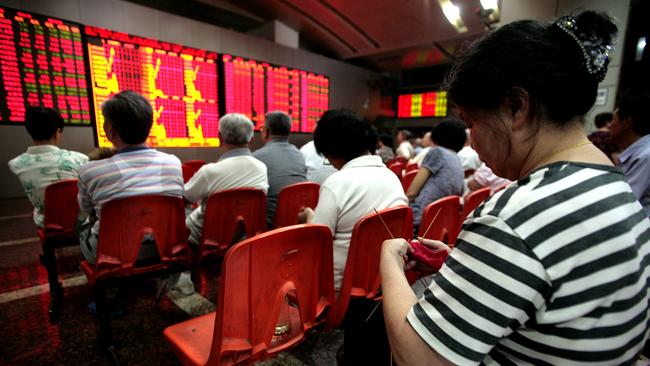
CHINA’S stock market crash has already bled into the iron ore price, and it could have flow-on effects into Australia’s credit-fuelled housing market, economists have warned.
Today iron ore prices plummeted to a new six-year low, falling to $A59.83 ($US44.59) a tonne, their lowest level since 2009 following chaos in China’s stockmarket. Despite the extreme volatility in recent days, China’s main Shanghai Composite index closed in positive territory on Thursday following government efforts to stabilise markets — though many questioned whether gains would last.
The ongoing chaos is already being called “China’s 1929”, the year the biggest stock market crash in history marked the onset of the Great Depression. Others have said it’s more akin to the crash of 1987, which saw big falls but relatively little lasting fallout.
After soaring 150 per cent in 12 months, China’s benchmark Shanghai Composite Index has been in free fall, losing nearly one third of its value — around $US3.2 trillion — after peaking on June 12.
“Already, there are warning signs of a slowdown, similar to those that front-ran the 1929 crash — depressed commodity prices and a virtual hiatus in global trade growth,” wrote the UK’s Telegraph.
“The Chinese economy is like one of those cartoon characters who manages to keep running long after leaving the edge of the cliff, only belatedly to look down and plunge into the abyss.”
Lindsay David of LF Economics has argued the impact of the Chinese crash on the Australian housing market could be twofold.
“As the Chinese economy starts to deteriorate so will the bank accounts of many Chinese, restricting their ability to purchase real estate overseas,” he said. “That could impact the small handful of suburbs where foreign buyers do have an impact on the real estate market.”
Of broader concern, however, are the macroeconomic implications. Mr David believes the iron ore price has much further to crash, which could in turn scare the wholesale lending community overseas lending to Australian banks for home financing.
“Banks have to get their money from somewhere to be able to lend to homebuyers. They’ve absorbed everyone’s deposits — if you put $1 in the bank they go and lend that to someone else. They’ve exhausted that, so they go into the wholesale lending market to acquire more funds.
“Real estate prices in Australia depend more on what some wholesale lender in New York or London is willing to lend than anything else,” he said. “House prices in Australia are dependent on debt growth, and if there’s no credit out there, house prices will begin to fall.”
The bad news would be a credit crunch, but the good news would be house prices becoming cheaper, he said. “That would be the worst-case scenario, but unfortunately it’s looking more and more likely. If that does happen, the good thing is we could hopefully start to get a bit of innovation into other areas of the economy.”
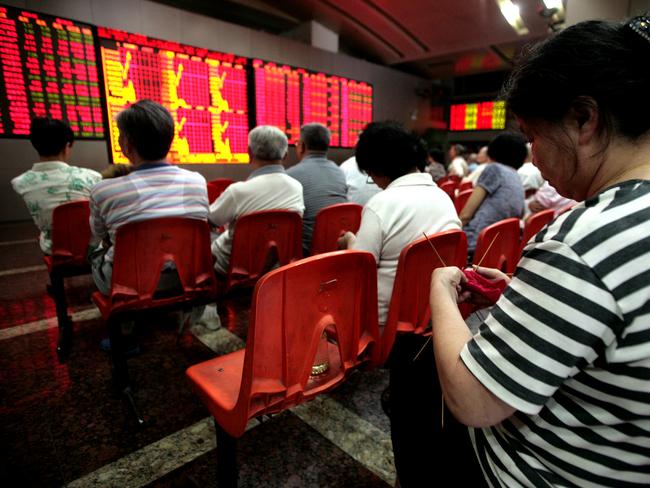
SMALL INVESTORS BURNT
Mum-and-dad Chinese investors who pumped cash — much of it borrowed — into the booming market at the urging of the government will be the big losers. According to Bank of America Merrill Lynch, while retail investors were buying, the rich were busy selling.
BAML found that sales by major shareholders of Chinese-listed companies have skyrocketed since last year, nearly doubling from 100 billion yuan ($A21.61 billion) to 190 billion yuan ($A41.05 billion) in 2014, surging to 360 billion yuan ($A77.78 billion) between January and May this year.
“The net result of this volatile market is a transfer of wealth from the people on the street to the wealthy, including many major shareholders, who cashed out,” BAML wrote in a research note. “We expect this will likely hurt consumption down the road.”
It warned that the opaqueness of China’s financial system meant contagion risk is high, similar to the US subprime crisis. “We had always considered the risk of a financial crisis in China as high,” BAML wrote. “What has happened in the stock market has likely increased the risks considerably and also brought forward the timeline.”
According to AMP Capital chief economist Dr Shane Oliver, however, the 1929 analogy is “probably a bit over the top”. “A better analogy would be 1987 crash,” he said. “Markets doubled in value and then fell substantially, and there was virtually no economic fallout.”
He said the 1929 crash turned into a debacle for the global economy because central banks raised interest rates rather than easing them at the same time governments were raising taxes.
“It’s hard to see a huge economic fallout for [China’s stock market crash],” he said. “The huge rise in the share market didn’t exactly stimulate the economy, so it’s hard to see that a fall would hurt the economy.”
The impact on middle-class Chinese investors would be serious, but he pointed out that only 100 million or so out of 1.4 billion Chinese own shares, and shares only account for around 12 per cent of household wealth in China compared with around 20 per cent in more developed markets.
He added that the dramatic plunge in the iron ore price was part of a broader trend. “The iron ore price was falling right while the share market was surging,” Dr Oliver said. “I tend to see the two as separate, as I think the broad trend in the iron ore price remains downward, simply because we’re supplying more.”
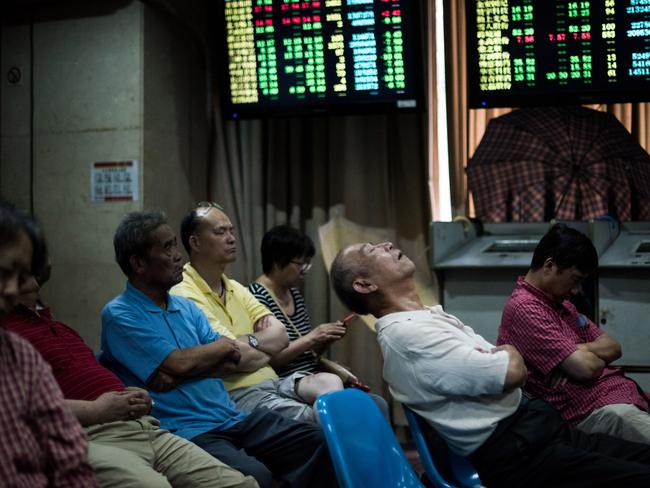
MORE SYMPTOM THAN CAUSE
According to Patrick Chovanec, managing director and chief strategist with Silvercrest Asset Management group and former business professor at Tsinghua University in Beijing, the stock market bubble is “more of a symptom of China’s economic troubles than a cause”.
“China’s stock market became detached from its real economy, which has been deteriorating over the course of the past few years, and reality caught up to it,” he told National Public Radio in the US. “I don’t think it’s over. I think they’re going right back down to where they started about a year ago.”
That would be consistent with the 2007 bubble, when China’s market tripled over the course of 12 months, and over the next 12 months sold off right back to where it started. The difference in 2008, however, was China’s economy was still “going like gangbusters” despite its stock market losing two thirds of its value.
“[Chinese shares] are very volatile and don’t always trade based on fundamentals. Sometimes the government gives the impression that everybody can pile in and it’s risk free, and the government will ensure nothing happens,” Mr Chovanec said.
“This time the government has really pulled out all the stops to try keep share prices from falling, but it hasn’t stopped the fall.”
But Mr Chovanec argues it’s the crash China needed to have, and will be good for the global economy in the long run as it will turn China into a driver of consumer demand.
“China is undergoing a profound economic adjustment away from one kind of growth model which relied on exports and investment, to another which is more balanced between domestic consumption and investment.”
China has produced more than it consumed for years, he said. “With $US4 trillion worth of foreign exchange reserves, it can afford to consume more than it produces. When the rest of the world looks at China, they shouldn’t be concerned about output — GDP levels — they should be concerned about whether China continues to consume.”
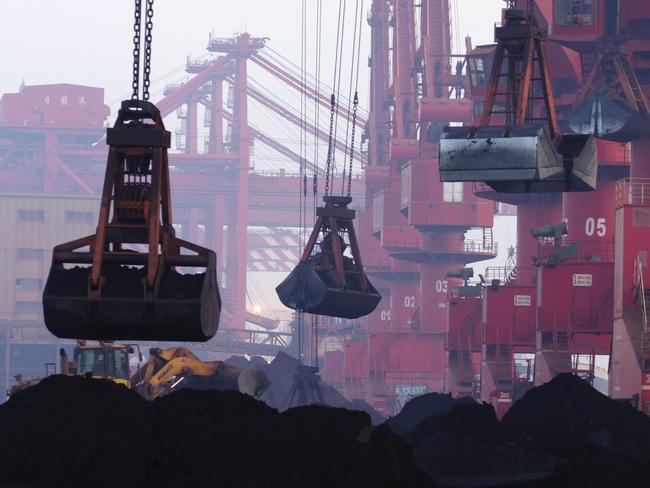
IRON ORE PRICE CRASHES
Iron ore prices plunged to fresh six-year lows on Thursday as contagion from China’s stock market rout hurt commodity markets, with resource-heavy economies like Australia bearing the brunt.
The spot price of the commodity used to make steel took its biggest one-day hit ever overnight, falling 10 per cent to $44.59 a tonne, analysts said, as demand in key market China continues to shrink. Prices were last at this level in May 2009.
At this level, most Australian miners would be producing at a loss, with the exception of low-cost giants like Rio Tinto and BHP Billiton.
Even the majors are feeling the pressure, with shares in both BHP and Rio trading near yearly lows on Thursday.
“The risk from Chinese equities markets is clearly impacting commodities markets,” IG Markets strategist Evan Lucas said in a note on “commodities contagion”.
“Iron ore has just logged its worst trading day on record. The steel price in China is now cheaper per tonne than cabbage.” While copper jumped as the US dollar slipped, oil prices were also on the slide, with US benchmark West Texas Intermediate falling 68 cents to $51.65 a barrel on Wednesday, its fifth day of losses.
Many agricultural commodity prices were also weaker, including cotton and wheat. The fall in iron ore and other commodities comes as China’s share market remains in free fall, even in the face of Beijing’s efforts to calm investors.
China has suspended trading in more than half of the country’s listed stocks, banned short selling and new listings, and enlisted the help of the country’s major stockbrokers through a huge stabilisation fund.
But the moves have so far failed to stop the bleeding.
ANZ analysts also linked the commodity pressure to the Chinese market, and noted that “while there are some signs of prices stabilising, any sustained recovery in commodity markets is unlikely in the short term”.
Iron ore is Australia’s largest export and government revenue has taken a hit as the price dives.
Last month, Canberra lowered its forecast for iron ore prices to $54.40 a tonne for this year and $52.10 in 2016 as China’s output of steel weakens.
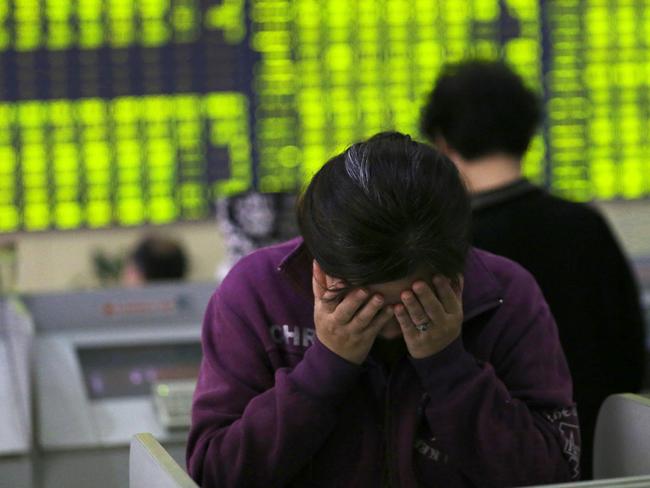
SHANGHAI STOCKS EXTEND LOSSES
The Australian share market closed flat today, with losses mitigated by investors looking for bargains and better than expected jobs data and inflation results from China.
At the close on Thursday, the benchmark S&P/ASX200 index was 1.5 points, or 0.03 per cent, higher at 5,471.0, while the broader All Ordinaries index was down 0.2 points, or zero per cent, at 5,456.3, according to preliminary figures.
Meanwhile, Chinese stocks remained volatile as the government launched massive measures to staunch the sell-off. Despite recent falls, the main Shanghai Composite Index surged 5.76 per cent at market close after swinging more than 10 per cent during the day. The Shenzhen Composite Index, which tracks stocks on China’s second exchange, ended up 3.76 per cent, or 70.90 points, to 1,955.35 on turnover of 277.6 billion yuan.
More than 1,100 stocks on both markets surged by their 10 per cent daily limits, data from the exchanges showed.
“As China beefs up its efforts to rescue the market ... market sentiment is recovering slightly,” Qian Qimin, an analyst at Shenwan Hongyuan Group, told Bloomberg News.
“The rise today may help ease some selling pressure when companies resume their shares from trading, but whether it’s sustainable will depend on what policies are coming next.”
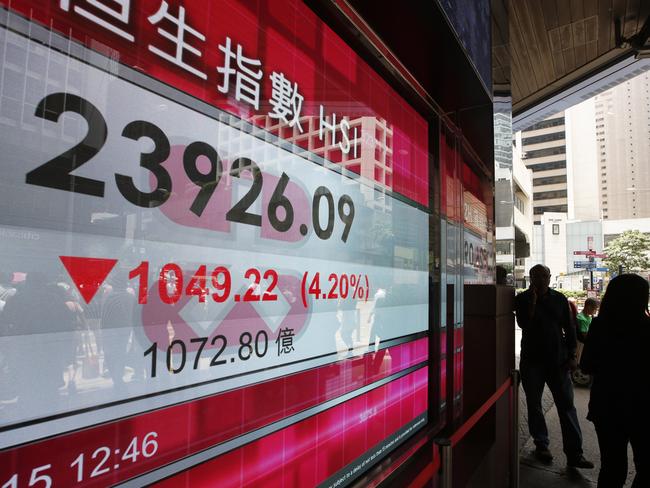
BIG SHAREHOLDERS BARRED
Late Wednesday, China’s market regulator barred major shareholders and executives of listed companies from selling their shares for the next six months, the latest government action to stem a slide in the markets.
The ban applies to “big” shareholders — defined as those with stakes of more than five per cent — company directors, board supervisors and senior executives, the China Securities Regulatory Commission said.
The move aimed to “maintain stability” of the stock market, it said. The benchmark Shanghai index had plunged 32 per cent by the close on Wednesday from its peak last month.
“It suggests desperation,” Mark Mobius, chairman of Templeton Emerging Markets Group, told Bloomberg News.
“It actually creates more fear because it shows that they’ve lost control.” Over the past week, China has announced a slew of measures aimed at slowing a slide in the stock market.
Amid the plunge, more than 1,400 companies have been suspended from trading as of Thursday, representing around 50 per cent of listed stocks, to avert further falls in prices, according to Bloomberg.
The People’s Bank of China, the central bank, said on Thursday that it was providing liquidity to the state-backed China Securities Finance Co. to help stabilise the market, reaffirming an earlier pledge.
Other recent moves include allowing insurance companies to invest more assets in stocks and a program to buy the shares of smaller companies.
The country’s 111 major state-owned enterprises were barred from selling shares in their listed subsidiaries by the State-owned Assets Supervision and Administration Commission, which oversees them.
“The Chinese government is having a ‘whatever it takes’ moment with the stock market,” Societe Generale said in a research report.
“The impact on the market remains muted and so more resources will probably be ramped up for the battle in the coming days.”



